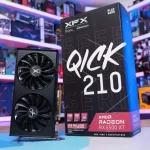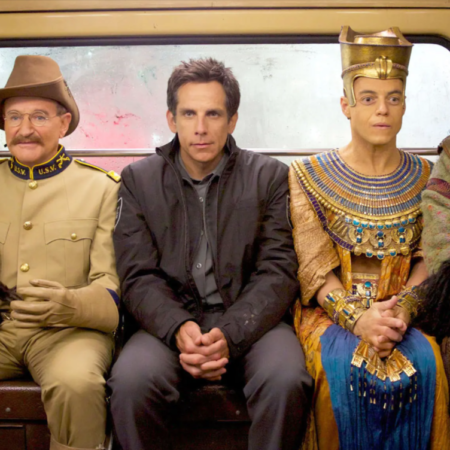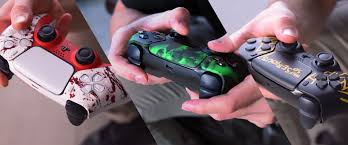Building a PC can be a fun and rewarding experience, but it can also be daunting if you’re not sure where to start. This guide will walk you through the process of building a PC, from choosing the right parts to putting it all together.
We’ll cover everything you need to know, from the basics of computer hardware to the more advanced aspects of overclocking and water cooling. By the end of this guide, you’ll be able to build your own custom PC that’s perfect for your needs.
So if you’re ready to take the plunge, read on for everything you need to know about building a PC.
What you need to build a PC
To build a PC, you will need the following components:
- A case
- A motherboard
- A CPU
- A graphics card
- RAM
- Storage
- A power supply
- A cooling system
You may also need some additional accessories, such as a keyboard, mouse, and monitor.
Choosing the right parts for your PC
The first step in building a PC is choosing the right parts. This can be a daunting task, as there are many different components to choose from. However, by following a few simple guidelines, you can make sure that you choose the right parts for your needs.
The most important factor to consider when choosing parts is your budget. The price of a PC can vary significantly, depending on the components that you choose. If you are on a tight budget, you will need to make some compromises on the performance of your PC. However, even if you are working with a limited budget, you can still build a PC that meets your needs.
Another important factor to consider is the purpose of your PC. If you plan on using your PC for gaming, you will need to choose different parts than if you plan on using it for basic tasks such as web browsing and email.
Once you have considered your budget and the purpose of your PC, you can start to choose the individual components. The following is a list of the essential components that you will need for your PC:
- CPU
- Motherboard
- Memory
- Storage
- Graphics card
- Power supply
- Case
For more information on choosing the right parts for your PC, you can consult a PC building guide or consult with a knowledgeable salesperson at your local computer store.
4. Building your PC
Once you have gathered all of the necessary parts, you can begin building your PC. The process is relatively simple, but it is important to be careful and to follow the instructions carefully.
The first step is to install the motherboard into the case. The motherboard is the central component of your PC, and it is responsible for connecting all of the other components together. Once the motherboard is installed, you can install the CPU, RAM, and graphics card.
Once the major components are installed, you can connect the power supply and the hard drive. The power supply provides power to the entire system, and the hard drive stores your data.
Once all of the components are connected, you can close the case and turn on the power. If everything is connected correctly, your PC should boot up and you will be able to use it.
Building a PC can be a rewarding experience, but it is important to be careful and to follow the instructions carefully. If you are not comfortable with building a PC, you can always have a professional do it for you.
“`
5. Installing the operating system
Once you have built your PC, you will need to install an operating system. The most popular operating systems for PCs are Windows, macOS, and Linux.
To install an operating system, you will need a bootable USB drive. You can create a bootable USB drive using a tool such as Rufus.
Once you have created a bootable USB drive, you can install the operating system by following these steps:
- Turn on your PC and insert the bootable USB drive.
- Press the key that your BIOS uses to select the boot device. This key is usually F12, F2, or Delete.
- Select the bootable USB drive from the list of devices.
- Follow the on-screen instructions to install the operating system.
After the operating system has been installed, you will need to set up your PC. This includes creating a user account, configuring your network settings, and installing your desired applications.
“`
How to Build a PC
Building a PC is a great way to get a custom-made computer that meets your specific needs and budget. It can also be a fun and rewarding project. This guide will walk you through the process of building a PC, from choosing the parts to assembling and testing it.
What you need to build a PC
To build a PC, you will need the following:
* A case
* A motherboard
* A CPU
* A graphics card
* RAM
* Storage (SSD or HDD)
* A power supply
* A cooling system
* A keyboard and mouse
* A monitor
Choosing the right parts for your PC
The first step in building a PC is choosing the right parts. You will need to decide on the following:
* The type of case you want
* The size of your motherboard
* The type of CPU you want
* The type of graphics card you want
* The amount of RAM you need
* The type of storage you want
* The power supply you need
* The cooling system you need
Building your PC
Once you have chosen the parts for your PC, you can begin assembling it. The process of building a PC is relatively simple, but there are a few things you need to keep in mind.
* Make sure you have a clean work surface.
* Read the instructions for your motherboard and case carefully.
* Take your time and be careful not to damage any of the parts.
* Double-check your work before you power on the PC.
Installing the operating system
Once you have assembled your PC, you will need to install the operating system. The process of installing an operating system is relatively simple, but there are a few things you need to keep in mind.
* Make sure you have the correct drivers for your hardware.
* Follow the instructions for your operating system carefully.
* Take your time and be careful not to damage any of the parts.
* Double-check your work before you restart the PC.
Setting up your PC
Once you have installed the operating system, you will need to set up your PC. The process of setting up a PC is relatively simple, but there are a few things you need to keep in mind.
* Make sure you have all of the necessary software installed.
* Configure your PC’s settings to your liking.
* Create a user account for yourself.
* Connect to the internet.
Troubleshooting common PC problems
There are a number of common PC problems that you may encounter. Here are a few tips for troubleshooting these problems:
* Make sure your PC is properly connected to power and the internet.
* Check the cables and connections to make sure they are properly plugged in.
* Restart your PC.
* Update your drivers.
* Run a diagnostic tool.
Upgrading your PC
Over time, you may want to upgrade your PC to improve its performance. There are a number of ways to upgrade your PC, including:
* Upgrading your CPU
* Upgrading your graphics card
* Upgrading your RAM
* Upgrading your storage
Customizing your PC
You can customize your PC to make it look and feel the way you want. There are a number of ways to customize your PC, including:
* Changing the case
* Changing the motherboard
* Changing the CPU cooler
* Changing the RAM
* Changing the storage
Maintaining your PC
It is important to maintain your PC to keep it running smoothly. Here are a few tips for maintaining your PC:
* Keep your PC clean.
* Update your drivers regularly.
* Run a malware scan regularly.
* Back up your data regularly.
Tips for building a PC on a budget
If you are on a budget, there are a few things you can do to build a PC that meets your needs without breaking the bank.
* Choose a case that is smaller than average.
* Choose a motherboard that is not as powerful as the latest models.
* Choose a CPU that is not the most powerful on the
7. Troubleshooting common PC problems
Here are some common PC problems and how to troubleshoot them:
- **The computer won’t turn on.**
- Make sure that the power cord is plugged in securely to both the computer and the outlet.
- Check the power switch on the back of the computer to make sure that it is turned on.
- If the computer is still not turning on, try resetting the CMOS battery.
- **The computer is making strange noises.**
- A high-pitched whining noise could be a sign of a problem with the fan.
- A clicking noise could be a sign of a problem with the hard drive.
- A grinding noise could be a sign of a problem with the power supply.
- **The computer is running slowly.**
- There could be too many programs running at the same time.
- The hard drive could be full.
- The RAM could be too small.
- **The computer is not connecting to the internet.**
- Make sure that the network cable is plugged in securely to both the computer and the router.
- Check the Wi-Fi settings on the computer to make sure that they are correct.
- If the computer is still not connecting to the internet, try restarting the router.
- **The computer is not displaying anything on the screen.**
- Make sure that the monitor is plugged in securely to both the computer and the outlet.
- Check the video cable to make sure that it is plugged in securely to both the computer and the monitor.
- If the monitor is still not displaying anything, try restarting the computer.
8. Upgrading your PC
Upgrading your PC is a great way to improve its performance and extend its lifespan. There are a number of different ways to upgrade your PC, and the best approach for you will depend on your specific needs and budget.
Some of the most common PC upgrades include:
- Adding more RAM
- Upgrading your graphics card
- Adding a new hard drive or SSD
- Replacing your CPU
- Installing a new cooling system
Before you start upgrading your PC, it’s important to do your research and make sure that you’re choosing the right parts for your needs. You should also make sure that you have the necessary tools and skills to perform the upgrade.
If you’re not sure how to upgrade your PC, you can always take it to a professional. A qualified technician can help you choose the right parts and install them correctly.
Upgrading your PC can be a great way to improve its performance and extend its lifespan. However, it’s important to do your research and make sure that you’re choosing the right parts for your needs. By following these tips, you can safely and easily upgrade your PC and get the most out of it.
9. Customizing your PC
Once you have built your PC, you may want to customize it to your liking. This can include adding new components, changing the case, or overclocking the CPU.
Here are some tips for customizing your PC:
- Add new components: You can upgrade your PC’s graphics card, CPU, or RAM to improve its performance. You can also add new storage devices, such as a solid-state drive, to speed up your PC.
- Change the case: You can choose a case that fits your style and needs. There are cases available in a variety of sizes, colors, and features.
- Overclock the CPU: Overclocking is the process of increasing the CPU’s clock speed beyond its factory settings. This can improve performance, but it also increases the risk of damage to your CPU.
For more information on customizing your PC, you can consult the following resources:
10. Maintaining your PC
Maintaining your PC is important to keep it running smoothly and prevent problems. Here are some tips for maintaining your PC:
- Keep your PC clean by dusting it regularly and removing any dust or dirt that has accumulated inside.
- Update your software regularly to keep it up-to-date with the latest security patches and features.
- Run a virus scan regularly to check for and remove any viruses or malware that may have infected your PC.
- Back up your data regularly to protect it in case of a hard drive failure or other data loss event.
- Defragment your hard drive regularly to improve performance.
- Optimize your PC for performance by disabling unnecessary startup programs and services.
By following these tips, you can help to keep your PC running smoothly and prevent problems.
Tips for building a PC on a budget
Building a PC on a budget can be a challenge, but it is definitely possible to do it without sacrificing performance. Here are a few tips to help you get started:
- **Set a budget and stick to it.** This is the most important tip of all. Once you know how much money you have to spend, you can start to make decisions about which parts to buy.
- **Look for deals and discounts.** There are many ways to save money on PC parts, such as buying them on sale, using coupons, or looking for refurbished or used parts.
- **Consider building a smaller or less powerful PC.** If you don’t need a lot of power, you can save money by building a smaller or less powerful PC.
- **Use free or open-source software.** There are many great free or open-source software programs available that can save you money on software purchases.
- **Do your research before you buy.** Make sure you know what you’re looking for before you start buying parts. This will help you avoid making impulse purchases and spending more money than you need to.
By following these tips, you can build a PC on a budget without sacrificing performance.








